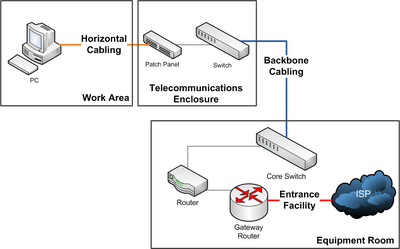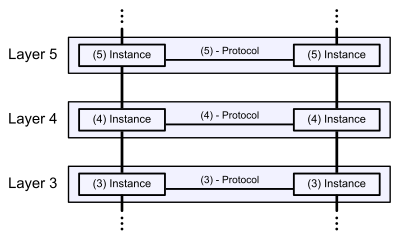Computación básica para alumnos secundaria Carlos Fernández Muriano
Search This Blog
Monday 28 September 2015
Informática Educativa Carlosfmur@gmail.com: Excel: situación patrimonial
Informática Educativa Carlosfmur@gmail.com: Excel: situación patrimonial: La Planilla de excel para Estado de Situación Patrimonial resume de manera simple los activos corrientes y no corrientes de una emp...
Saturday 19 September 2015
Advantages and Disadvantages of Different Network Topologies


Network topologies describe the ways in which the elements of a network are connected.
They describe the physical and logical arrangement of network nodes
Advantages and Disadvantages of...
Bus Topology
Ring Topology
Mesh Topology
Star Topology
Tree Topology
Hybrid Topology
Bus topology
Advantages
▸ The data being transmitted between two nodes passes through all the intermediate nodes. A central server is not required for the management of this topology.
▸ The traffic is unidirectional and the data transmission is high-speed.
▸ In comparison to a bus, a ring is better at handling load.
▸ The adding or removing of network nodes is easy, as the process requires changing only two connections.
▸ The configuration makes it easy to identify faults in network nodes.
▸ In this topology, each node has the opportunity to transmit data. Thus, it is a very organized network topology.
▸ It is less costly than a star topology.
Disadvantages
▸ The failure of a single node in the network can cause the entire network to fail.
▸ The movement or changes made to network nodes affect the entire network's performance.
▸ Data sent from one node to another has to pass through all the intermediate nodes. This makes the transmission slower in comparison to that in a star topology. The transmission speed drops with an increase in the number of nodes.
▸ There is heavy dependency on the wire connecting the network nodes in the ring.
Back to Index
Read more at Buzzle: http://www.buzzle.com/articles/advantages-and-disadvantages-of-different-network-topologies.html
http://www.buzzle.com/articles/advantages-and-disadvantages-of-different-network-topologies.html
Computational science


Computational science (also scientific computing or scientific computation) is concerned with constructing mathematical models and quantitative analysis techniques and using computers to analyze and solve scientific and engineering problems. In practical use, it is typically the application of computer simulation and other forms of computation from numerical analysis and theoretical computer science to problems in various scientific disciplines.
The field is different from theory and laboratory experiment which are the traditional forms of science and engineering. The scientific computing approach is to gain understanding, mainly through the analysis of mathematical models implemented on computers.
Scientists and engineers develop computer programs, application software, that model systems being studied and run these programs with various sets of input parameters. In some cases, these models require massive amounts of calculations (usually floating-point) and are often executed on supercomputers or distributed computing platforms.
Numerical analysis is an important underpinning for techniques used in computational science.
Programming languages and computer algebra systems commonly used for the more mathematical aspects of scientific computing applications include R (programming language), TK Solver, MATLAB, Mathematica, SciLab, GNU Octave, Python (programming language) with SciPy, and PDL. The more computationally intensive aspects of scientific computing will often use some variation of C or Fortran and optimized algebra libraries such as BLAS or LAPACK.
https://en.wikipedia.org/wiki/Computational_science
Friday 18 September 2015
Lenguaje de programaciòn PYTHON


Python es un lenguaje de programación interpretado cuya filosofía hace hincapié en una sintaxis que favorezca un código legible.
Se trata de un lenguaje de programación multiparadigma, ya que soporta orientación a objetos, programación imperativa y, en menor medida, programación funcional. Es unlenguaje interpretado, usa tipado dinámico y es multiplataforma.
Es administrado por la Python Software Foundation. Posee una licencia de código abierto, denominada Python Software Foundation License, que es compatible con laLicencia pública general de GNU a partir de la versión 2.1.1, e incompatible en ciertas versiones anteriores.
Structured cabling


Structured cabling is building or campus telecommunications cabling infrastructure that consists of a number of standardized smaller elements (hence structured) called subsystems.
Structured cabling design and installation is governed by a set of standards that specify wiring data centers,offices, and apartment buildings for data or voice communications using various kinds of cable, most commonly category 5e (CAT-5e), category 6 (CAT-6), and fiber optic cabling and modular connectors. These standards define how to lay the cabling in various topologies in order to meet the needs of the customer, typically using a central patch panel (which is normally 19 inch rack-mounted), from where each modular connection can be used as needed. Each outlet is then patched into a network switch (normally also rack-mounted) for network use or into an IP or PBX (private branch exchange) telephone system patch panel.
https://en.wikipedia.org/wiki/Structured_cabling
Informática Educativa Carlosfmur@gmail.com: Computational statistics
Informática Educativa Carlosfmur@gmail.com: Computational statistics: Computational statistics , or statistical computing , is the interface between statistics and computer science . It is the ar...
Wednesday 16 September 2015
Small Basic
Small Basic es un proyecto que está destinado a hacer la programación divertida de nuevo. Al proporcionar un lenguaje de programación sencillo y fácil de aprender en un entorno de desarrollo acogedor, Small Basic hace que la programación sea muy sencilla. Ideal para niños y adultos por igual, Small Basic ayuda a los principiantes a dar el primer paso en el maravilloso mundo de la programación.
http://social.technet.microsoft.com/wiki/contents/articles/17328.bienvenido-a-small-basic-es-es.aspx
Tuesday 8 September 2015
Open Systems Interconnection model

The Open Systems Interconnection model (OSI Model) is a conceptual model that characterizes and standardizes the communication functions of a telecommunication or computing system without regard of their underlying internal structure and technology. Its goal is the interoperability of diverse communication systems with standard protocols. The model partitions a communication system into abstraction layers. The original version of the model defined seven layers.
A layer serves the layer above it and is served by the layer below it. For example, a layer that provides error-free communications across a network provides the path needed by applications above it, while it calls the next lower layer to send and receive packets that comprise the contents of that path. Two instances at the same layer are visualized as connected by a horizontal connection in that layer.
The model is a product of the Open Systems Interconnection project at the International Organization for Standardization (ISO), maintained by the identification ISO/IEC 7498-1.
https://en.wikipedia.org/wiki/OSI_model
Saturday 5 September 2015
Big O Analysis in computer science


What is Big O Analysis in computer science – a tutorial
First and foremost, do not even walk into a software interview without knowing what Big O Analysis is all about – you will embarrass
yourself. Big O Notation is simply something that you must know if you expect to get a job in this industry. Here we present a
tutorial on Big O Notation, along with some simple examples to really help you understand it. You can consider this article to be
sort of a big O notation for dummies tutorial, because we really try to make it easy to understand.
When solving a computer science problem there will usually be more than just one solution. These solutions will often be in the form
of different algorithms, and you will generally want to compare the algorithms to see which one is more efficient.
This is where Big O analysis helps – it gives us some basis for measuring the efficiency of an algorithm. A more detailed explanation
and definition of Big O analysis would be this: it measures the efficiency of an algorithm based on the time it takes for the
algorithm to run as a function of the input size. Think of the input simply as what goes into a function – whether it be an array of
numbers, a linked list, etc.
Big O Notation Practice Problems
Even if you already know what Big O Notation is, you can still check out the example algorithms below and try to figure out the Big O
Notation of each algorithm on your own without reading our answers first. This will give you some good practice finding the Big O
Notation on your own using the problems below.
See more:http://www.programmerinterview.com/index.php/data-structures/big-o-notation/
Friday 4 September 2015
GNU/Linux


Linux, es un kernel, es decir, el núcleo de un Sistema Operativo, mientras que GNU/Linux, el Sistema Operativo que utiliza el Kernel Linux como núcleo, creado, difundido y promovido a través del Proyecto GNU, por la Free Software Foundation, organización sin fines de lucro, fundada por Richard Stallman, principal precursor del Software Libre.
https://librosweb.es/libro/python/capitulo_1/introduccion_al_sistema_operativo_gnu_linux.html
Tuesday 1 September 2015
ciencias de la computación
Las ciencias de la computación o ciencias computacionales son aquellas que abarcan las bases teóricas de la información y la computación, así como su aplicación en sistemas computacionales. El cuerpo de conocimiento de las ciencias de la computación es frecuentemente descrito como el estudio sistemático de los procesos algorítmicos que describen y transforman información: su teoría, análisis, diseño, eficiencia, implementación y aplicación.
https://es.wikipedia.org/wiki/Ciencias_de_la_computaci%C3%B3n
Subscribe to:
Posts (Atom)

